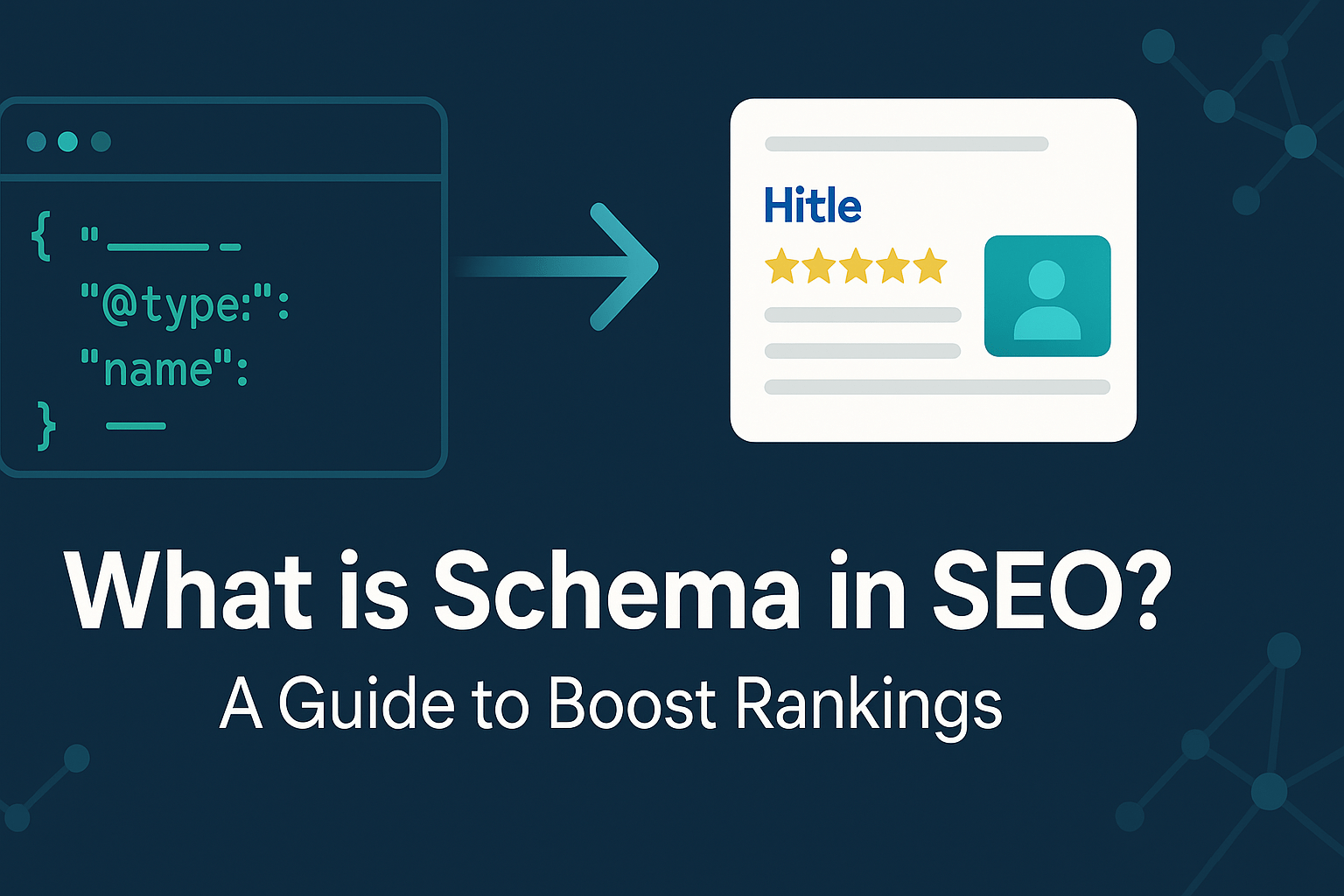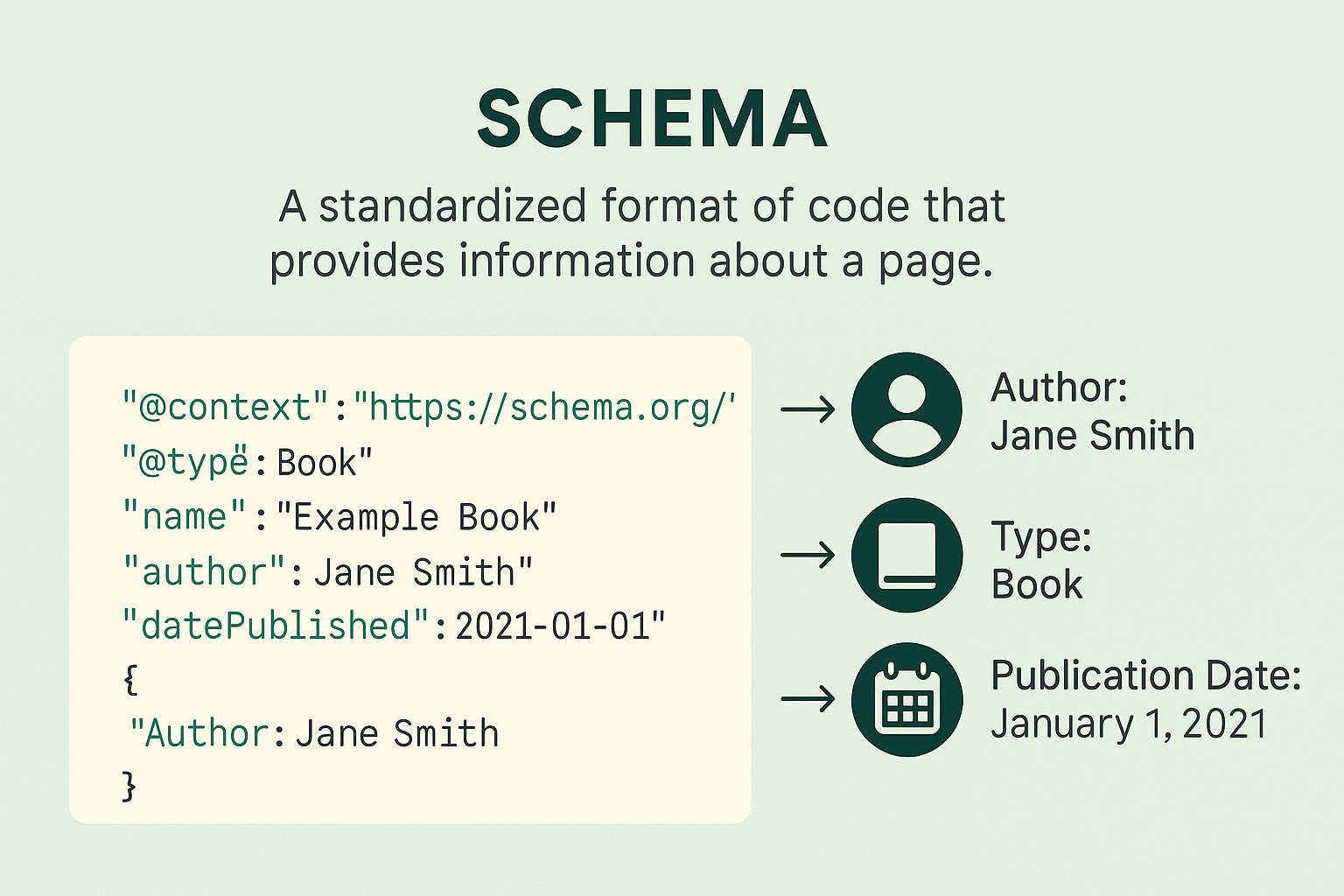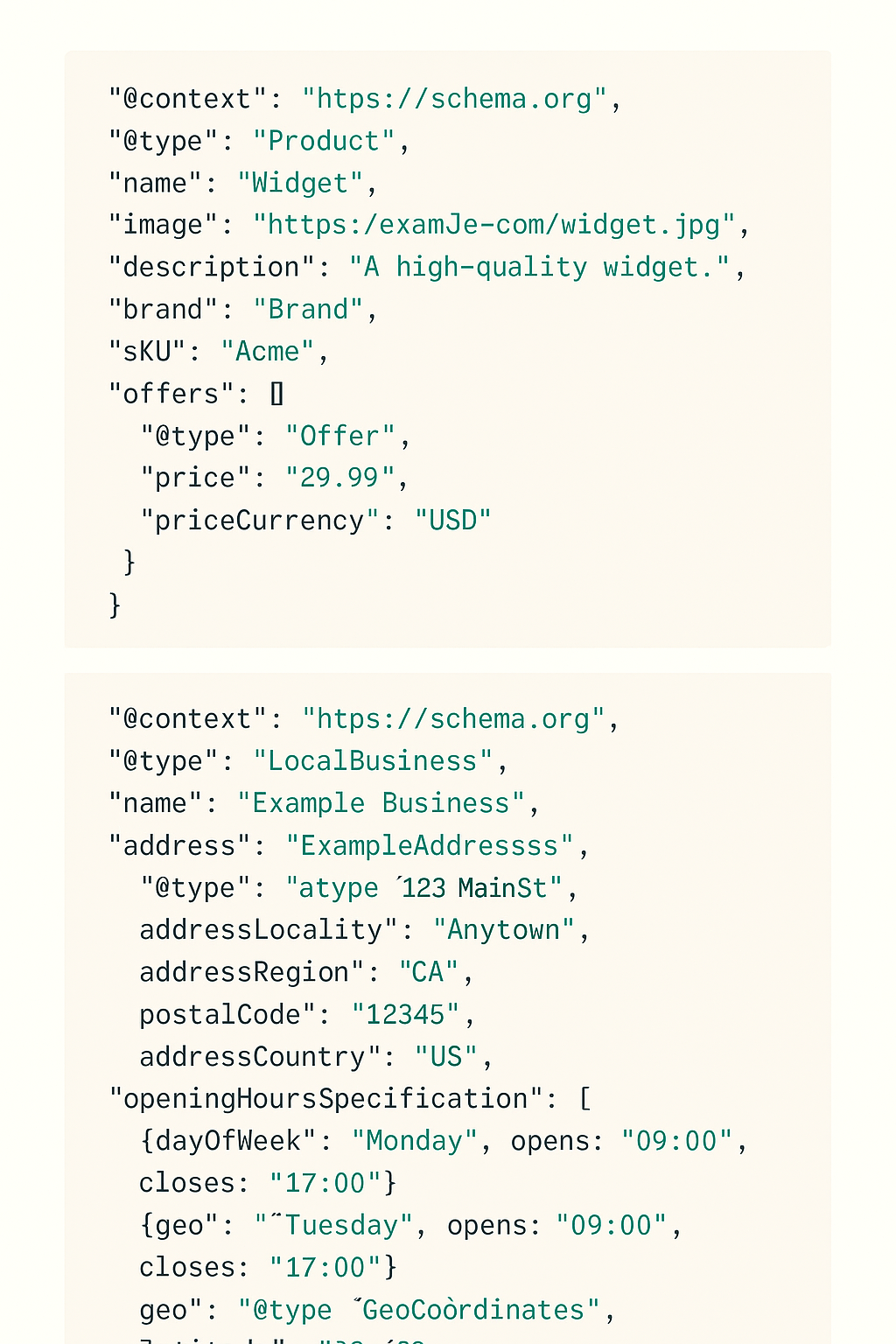
What is Schema in SEO A Guide to Boost Rankings
What is Schema in SEO A Guide to Boost Rankings
Search engines read words. People read meaning. Schema is the bridge between those two, giving machines the context they need to interpret your content accurately and present it attractively in results. If you have ever wondered why certain listings show star ratings, prices, FAQs, or appear as rich panels, schema is the quiet machinery behind much of that visibility.
What schema markup actually is
Schema markup, also called structured data, is a shared vocabulary from Schema.org that labels the things on a page and the relationships between them. Instead of a crawler guessing that a block of text looks like a recipe or a product, you can state it plainly: this page is a Product, it has a name, brand, price, availability, and reviews.
Think of it as a thin semantic layer that turns your content into a set of machine-readable facts. Those facts can link to known entities in Google’s knowledge graph and beyond, which reduces ambiguity. Is “Avatar” an image profile or a film? Schema can answer that without guesswork.
A key point for SEO teams: schema does not act as a direct ranking signal. It does, however, make pages eligible for rich results and search features that can lift click-through rates and strengthen brand presence across the results page, including image search, news carousels, and local packs.

Why schema matters for search visibility
Rich results are magnets for attention. A product with price and stock status, a recipe with photo and cook time, an event with date and venue, or a FAQ with expandable questions, each occupies more real estate and delivers answers faster.
- Search snippets become more informative, which lifts CTR and reduces pogo-sticking
- Content becomes eligible for specialised features, from breadcrumbs to how-to steps
- Entities get connected to knowledge panels, improving factual consistency across Google properties
- Voice assistants can parse precise fields, improving selection as the spoken answer
This is especially relevant in Aotearoa New Zealand, where local intent queries are strong. Marking up LocalBusiness information improves the odds that a user in Christchurch finds your hours, phone, and menu straight in the result, or hears your details read out when they ask a smart speaker.
Formats you can use
All major search engines support three formats. Google recommends JSON-LD because it is easier to maintain, though all three are valid when done correctly.
| Format | How it works | Pros and cautions |
|---|---|---|
| JSON-LD | A script tag with a JSON block in the HTML head or body | Clean separation from visible content, simple to maintain, ideal for most CMS setups |
| Microdata | Inline attributes added to HTML tags | Keeps data close to the content, can get messy during redesigns or with partial templates |
| RDFa | Inline attributes based on RDF standards | Flexible for complex graphs, higher complexity for typical SEO use |
Pick the one your team can implement consistently. Most developers and plugin ecosystems now default to JSON-LD.
How schema powers AI-driven search
Modern search relies on models that interpret intent, entities, and relationships. Schema gives those models unambiguous signals.
- Entity disambiguation: tag Jaguar as a Car or an Animal, or an Organisation with a specific ID
- Relationship clarity: specify that a Person worksFor an Organisation, or a Product hasBrand and isRelatedTo an Accessory
- Fact extraction: expose cookTime, openingHours, or aggregateRating, so AI systems do not have to infer them
Voice results depend heavily on clear structure. If your recipe steps and durations are marked up, a voice assistant can read them in the right sequence. If your LocalBusiness has precise and , a user asking “Is it open now?” can get a reliable answer without clicking.
Entity linking helps too. By adding URLs to sources like Wikipedia, the Companies Register, or your official social profiles, you remove ambiguity about which entity your page represents. This increases the likelihood of consistent panels, sitelinks, and brand-safe citations in generative answers.

Common schema types that move the needle
While there are many types, a small set delivers outsized value for most sites:
- Product: name, brand, offers, availability, price, sku, aggregateRating
- Article and NewsArticle: headline, image, author, datePublished, dateModified
- Event: name, startDate, location, offers, organiser
- Recipe: name, image, recipeIngredient, recipeInstructions, cookTime, nutrition
- LocalBusiness and its subtypes: name, address, geo, telephone, openingHours, menu
- FAQPage: a list of Q and A pairs
- HowTo: step-by-step instructions with materials and durations
- VideoObject: name, description, thumbnailUrl, uploadDate, duration, contentUrl
- JobPosting: title, datePosted, employmentType, jobLocation, baseSalary
Choose the types that match the intent of each page. A product list page is not a Product, it is a CollectionPage, and should not use Product markup for every visible item unless your layout shows full details required by guidelines.
Minimal viable markup for popular pages
When implementing schema markup for popular web pages, it’s essential to focus on the minimal viable attributes that unlock rich results and avoid common warnings. For Product pages, the critical fields include the product name, price, price currency, and availability, as these are the minimum requirements for eligibility in Google’s product-rich results. Adding details such as brand, SKU, aggregate rating, and customer reviews can further enhance visibility and click-through rates—studies show that rich results can increase organic traffic by up to 30%. For LocalBusiness pages, providing the business name, address, and telephone number is fundamental, while including opening hours, geographic coordinates, social profiles, menu links, and the area served can significantly improve local search performance. According to Google, businesses with complete and accurate schema are 70% more likely to attract location-based searches. For Article pages, the headline, featured image, publication date, and author are the baseline requirements, but enriching the markup with the date modified and main entity of the page can boost eligibility for features like Top Stories and increase trust signals for readers and search engines alike. By strategically implementing these schema properties, websites can maximise their chances of earning rich snippets, improving both visibility and user engagement in search results.
A quick JSON-LD example
Here is a clean Product snippet you can adapt. It sits once in the HTML, ideally near the end of the body or in the head.
And a LocalBusiness example with precise hours and geo:

Implementation workflow that scales
Maintaining accurate schema as your website evolves requires a systematic and disciplined process. Start by conducting a thorough inventory of your page templates—such as single product pages, product lists, blog posts, category pages, store locators, events, and recipes—to ensure comprehensive coverage. Each template should then be mapped to the appropriate schema type and its required properties, which is crucial for unlocking rich results and avoiding errors. Choosing the right format is also essential; JSON-LD is recommended for most implementations due to its flexibility and ease of maintenance, while Microdata should only be used if your CMS specifically requires it. To keep your schema in sync with site updates, build a reliable data source by pulling information directly from your CMS fields or a dedicated data layer. Implement and version your schema snippets carefully, ensuring there is one script per page type, generated either server-side or through a trusted tag management system. Validation should occur both at build time and in staging environments to catch issues early, and after deployment, ongoing monitoring via Google Search Console’s rich result reports is vital for maintaining performance. Additionally, maintaining a schema dictionary—a straightforward document listing each page type, its schema type, data sources, and ownership—can streamline collaboration and accountability. Research indicates that sites with well-maintained, accurate schema experience up to 35% higher click-through rates and significantly fewer search-related errors, underscoring the value of a tidy, proactive schema management process.
Validation, testing, and quality control
Tools to keep handy:
- Rich Results Test for supported features
- Schema.org validator for general shape
- Search Console Enhancements and Manual Actions
- Log-based monitors to flag missing fields or null values
Common errors to avoid:
- Marking up content that does not exist on the page
- Using the wrong type for the page intent
- Copying the same across different entities without care
- Inflating ratings or reviews that are not user-generated
- Mixing currencies or omitting currency codes
- Duplicating FAQPage across many pages with the same questions
Aim for consistency. If you mark up an organisation on the homepage, reuse its across all pages where it appears. That creates a cohesive graph rather than scattered fragments.
Advanced patterns for entity SEO
Once the basics are stable, small upgrades can produce compounding benefits.
- Use anchors for persistent entities Example: your company profile, primary products, key locations
- Link entities with to authoritative references Companies Register, LinkedIn, Wikipedia, official social profiles
- Add to clarify site structure
- Enrich media with and Supply width, height, and duration for better media treatment
- Consider for news content geared to audio
- For content hubs, use to expose curated lists with positions
- For multi-variant products, consider patterns from Schema.org extensions
These patterns reinforce how search systems perceive your site, strengthening your presence in knowledge panels and entity cards.
Myths, gotchas, and practical truths
There are several common misconceptions about schema markup that can lead to ineffective implementation. First, while schema increases the eligibility of your pages for rich results, it does not guarantee their display—Google’s algorithms consider factors such as content quality, relevance, and adherence to policies before awarding enhanced listings. Contrary to popular belief, schema is not a direct ranking factor; its true value lies in improving how your content is presented in search results, which can lead to higher click-through rates and better user engagement. For example, research shows that rich results can boost organic CTR by up to 30%, but only when the underlying content is trustworthy and relevant. Additionally, not all review stars are treated equally—Google enforces strict policies on where and how ratings appear, often filtering out self-serving or ineligible reviews to maintain result integrity. It’s also a mistake to assume that marking up every element on a page is beneficial; precision is far more effective than volume, as only content that is actually present and useful to searchers should be marked up. Finally, while plugins can simplify schema implementation, they are not a complete solution—they cannot interpret your unique business rules or resolve mismatches between structured data and visible content. Manual oversight and regular audits remain essential to ensure your schema is both accurate and compliant, helping you avoid errors and potential penalties.
How schema ties into content strategy
Structured data works best when it matches genuine content and intent. Align your editorial and product teams with these prompts:
- What questions is this page meant to answer?
- Which entity is central, and which attributes matter most to the reader?
- Do we publish the attributes users filter for in search, like price, size, hours, dates?
- Can we expose steps, FAQs, or specifications so that both humans and machines benefit?
When planning content clusters, map out the entity relationships. A buying guide that links to products should show both the guide as an Article and the items as a curated ItemList with position. This helps search engines understand that the page is a helpful selector, not a sales page.
Measuring impact without guesswork
Treat schema like any other product feature. Measure, iterate, repeat.
- Track impressions, CTR, and average position for URLs with schema
- Segment by rich result type in Search Console
- Annotate deployments in analytics to align lifts with releases
- Run template-level A/B tests where possible Example: FAQPage on a subset of pages to see if CTR improves
- Monitor changes in SERP features that you win or lose over time
Pay attention to quality signals. If a rich result appears and CTR drops, review how the snippet reads. The schema may be accurate but unappealing. Tweak titles, images, or visible content to improve the teaser value.
A 30‑day plan for teams in New Zealand
Week 1
- Audit pages that map cleanly to Product, Article, LocalBusiness, Event, or Recipe
- Collect required fields and confirm CMS sources
- Decide JSON-LD as your default format
Week 2
- Implement Product and Article across templates
- Add BreadcrumbList sitewide
- Validate in staging and fix warnings
Week 3
- Implement LocalBusiness on location pages, with accurate NAP and openingHours
- Add FAQPage to key service pages with real questions answered succinctly
- Start monitoring Search Console enhancement reports
Week 4
- Layer in Event or Recipe if relevant
- Add and anchors for your organisation and primary products
- Document your schema dictionary and create an ongoing QA checklist
This sprint leaves you with coverage on high-impact page types and a process you can maintain.
Practical tips for long-term maintenance
- Keep business hours and addresses synced with your source of truth If your hours change for public holidays, update the schema too
- Local teams should validate geo-coordinates, not just street addresses
- Translate the editorial style guide into schema rules Example: always include for articles
- Monitor deprecations and changes to supported features via Google Search Central updates
- Store and re-use values for stability across versions and redesigns
- Treat warnings seriously, not just errors, when they reduce feature eligibility
Where schema matters most for AI SEO right now
Three areas stand out.
- Entity clarity AI systems reward unambiguous data. Use , , and consistent naming to help models tie your content to the right nodes in the knowledge graph.
- Attribute precision For products, events, and local pages, high-quality attributes, dates, prices, and availability are the difference between an ordinary blue link and a standout listing, or a spoken answer that features your brand.
- Content structure for answers FAQPage, HowTo, and Article markup, when kept concise and accurate, increase the chance that your content is used to form answer cards and voice responses. This gives your site visibility inside AI-style result blocks that surface quick facts.
Resource checklist
Keep this shortlist handy for ongoing work:
- Schema.org type reference pages
- Google’s Rich Results Test
- Search Console Enhancements, specifically for Products, Articles, Events, FAQs, and Breadcrumbs
- A staging environment where you can test JSON-LD before release
- A schema dictionary that maps templates to types and required fields
- A named owner in your team who approves schema changes
Schema is a practical, durable way to speak clearly to both search engines and AI systems. It removes ambiguity, opens doors to richer presentation, and helps your best content meet users in the format they prefer, whether that is a rich snippet, a local panel, or a spoken answer.

